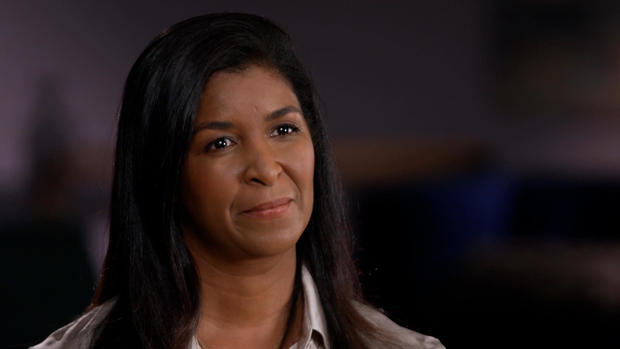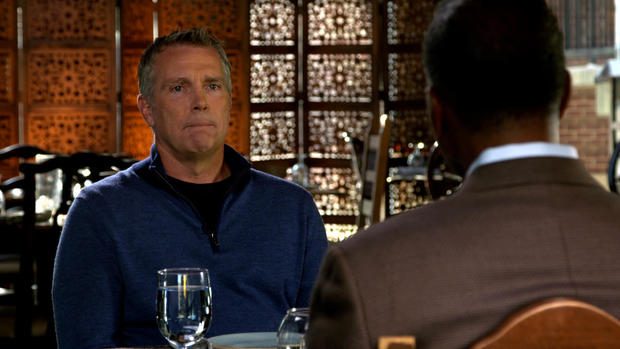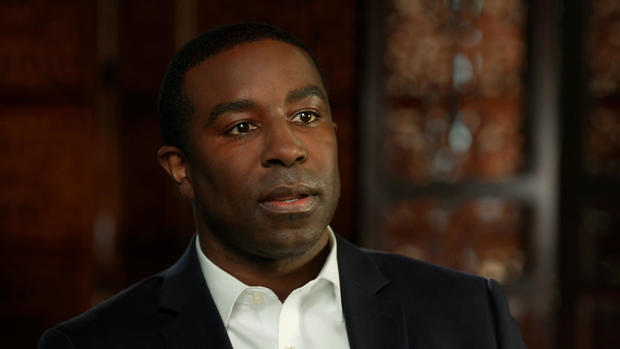We've all seen signs in front of shops, restaurants, and factories: "we're hiring!" "Help wanted!" And now, the Omicron variant is taking a toll on the already depleted workforce. We've wondered how there can be so many open jobs when nearly every employer seems to be offering better pay, benefits, and even signing bonuses.
The government's jobs report released this past week tells us what has happened: well over 20 million people quit their jobs in the second half of 2021. Some are calling it the "big quit," others the "great resignation."
But who can explain why this is happening? We found the best place to look for real-time answers is the huge online job site LinkedIn, which calls itself the world's largest professional network.
Karin Kimbrough: People have been living to work for a very long time. And I think the pandemic brought that moment of reflection for everyone. "What do I wanna do? What makes my heart sing?" And people are thinking, "If not now, then when?"
Karin Kimbrough is LinkedIn's chief economist. She has degrees from Stanford and Harvard and a Ph.D. from Oxford, used to work for the Federal Reserve, and now has a birds-eye view of the U.S. labor market.
Karin Kimbrough: We have this unique view of the data. We can see across millions of members and what they share with us, and we can see from employers, millions of them that are posting jobs on our platform. There is one person hired every 15 seconds right now on LinkedIn.
But LinkedIn's data on who is leaving jobs is most compelling: millions of baby boomers retiring early, but also millions of "Gen Z" workers - people in their teens and early 20s. Many more women than men. In all, the highest "quit rate" since the government started keeping track two decades ago.
Karin Kimbrough: At the nationwide level the number of Americans quitting their job is higher than ever.
Bill Whitaker: Higher than ever?
Karin Kimbrough: Higher than ever.
Bill Whitaker: Do the data tell you why?
Karin Kimbrough: We can see what sectors people are quitting. Retail sectors and hospitality sectors. It may not just be worth it for some folks. And so in some cases, people are quitting and they're not yet returning. They're taking a break. Americans are burnt out. I like to think of it as-- it's a, "Take this job and shove it," measure. It's just a sign of people saying, "You know, I don't need this."
Bill Whitaker: "I'm out."
Karin Kimbrough: "I'm out."
The most recent data show people quitting jobs across the board: 4.4% of all positions in education are open, over 6% in retail, and more than 8% in health care. Open jobs in hotels and restaurants are nearly 9%. That's almost a million-and-a-half vacant positions.
Carl Sobocinski: We do have openings, and we do need more employees.
Carl Sobocinski owns several restaurants in Greenville, South Carolina. He needs workers both in the kitchen and out front waiting tables.
Bill Whitaker: What's the biggest challenge in-- in attracting them and-- keeping the employees?
Carl Sobocinski: It's a problem that they're just not out there. Where we are, we just don't have the workers out there looking for the jobs.
Construction is another sector without enough workers; at last count, there were nearly 350,000 open construction jobs nationwide.
Bill Whitaker: You're finding it more difficult to find people right now--
James Jordon: Absolutely.
Bill Whitaker: --across the board?
James Jordon: Across the board.
James Jordon owns a fast-growing construction company in Greenville.
James Jordon: We doubled our revenue year over year. We don't have a work problem at all, now it's just a matter of finding-- the individuals to be able to do-- perform the work.
Bill Whitaker: So it's not a work problem, it's a worker problem?
James Jordon: It's a worker problem.
We came to Greenville, South Carolina, after seeing it on a LinkedIn data map showing trends of geographic migration. Lots of workers leaving big cities like San Francisco and Chicago and lots of workers moving to places like Austin and Miami… and Greenville.
Bill Whitaker: That's another big sign of this job market. People are moving.
Karin Kimbrough: A lot of people are just opting because of affordable housing costs to choose more affordable places, smaller cities that give you more space, will feel safer. And people are willing to try something new.
For what you'd pay to rent an apartment in San Francisco, you can buy a nice house in Greenville. It has attracted big employers like BMW and Michelin, but also tries to nurture small businesses and start-ups.
Still, you see all the same "help wanted" signs on Greenville's main street as you would in any big city. Many people believe that generous government stimulus and unemployment benefits are really what's keeping so many workers on the sidelines, no matter where they live.
Carl Sobocinski: The quick answer people say is we're still providing too many benefits, and too many people can sit at home and-- and get a check. I personally disagree with that. Our associates that didn't come back, They're not sitting at home. They found other careers, other opportunities, that fit their lifestyle better.
Karin Kimbrough: What we saw was that when these benefits were turned off when workers were no longer getting the benefits, they did not rush back to work.
Bill Whitaker: What does that tell you?
Karin Kimbrough: That tells me that it's not just a function of the benefits. That's not the only thing that's going on in the heads of workers when they make that calculus about, "Should I go back? Will I go back, and f-- for what job?"
Bill Whitaker: So is all of this producing-- a fundamental shift in the balance of power between employers and employees?
Karin Kimbrough: It's as if that social contract of work is being rewritten, and right now the worker's holding the pen. There are just thousands upon thousands of available jobs in America right now. And companies are eager to hire. But workers are being very choosy.
Bill Whitaker: So employees are kind of in the driver's seat?
Karin Kimbrough: Employees are in the driver's seat right now.
Workers want better pay and benefits, of course, but they're also demanding autonomy and flexibility, particularly in their work schedules. And employers – large and small - simply have to respond.
Carl Sobocinski: I think flexibility's critical.
Bill Whitaker: This is the employees' demand.
Carl Sobocinski: The employees, they want flexibility. And if you're an employer that won't-- that won't work with your employees to-- to be flexible with them, then you're gonna be-- you're missing out. I mean, you have to.
Bill Whitaker: So is it the case that gone are the days where an employer would say, "You're just lucky to have this job"?
James Jordon: I-- I think so. I think so, and I think it's for the better.
James Jordon's construction company will pay an employee's tuition if they want to continue their education and their moving expenses if they relocate. And like so many employers, he's offering signing bonuses and flexible hours to new hires.
Bill Whitaker: I understand there was one young man, one young recruit that you called every day for two months?
James Jordon: I did (LAUGH).




